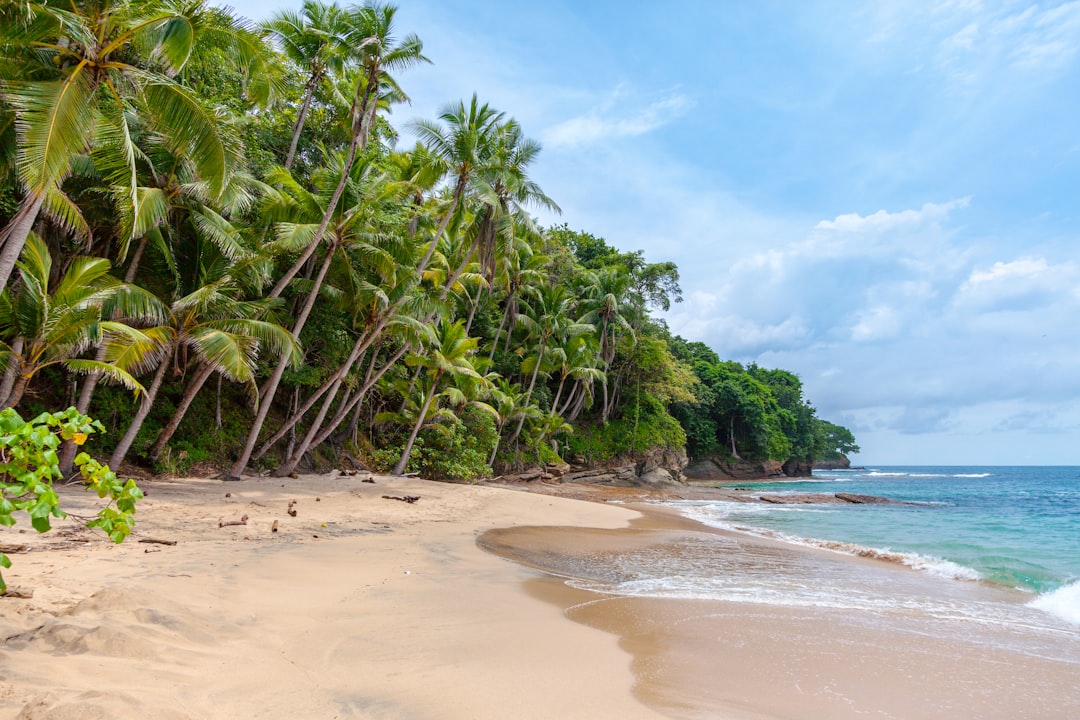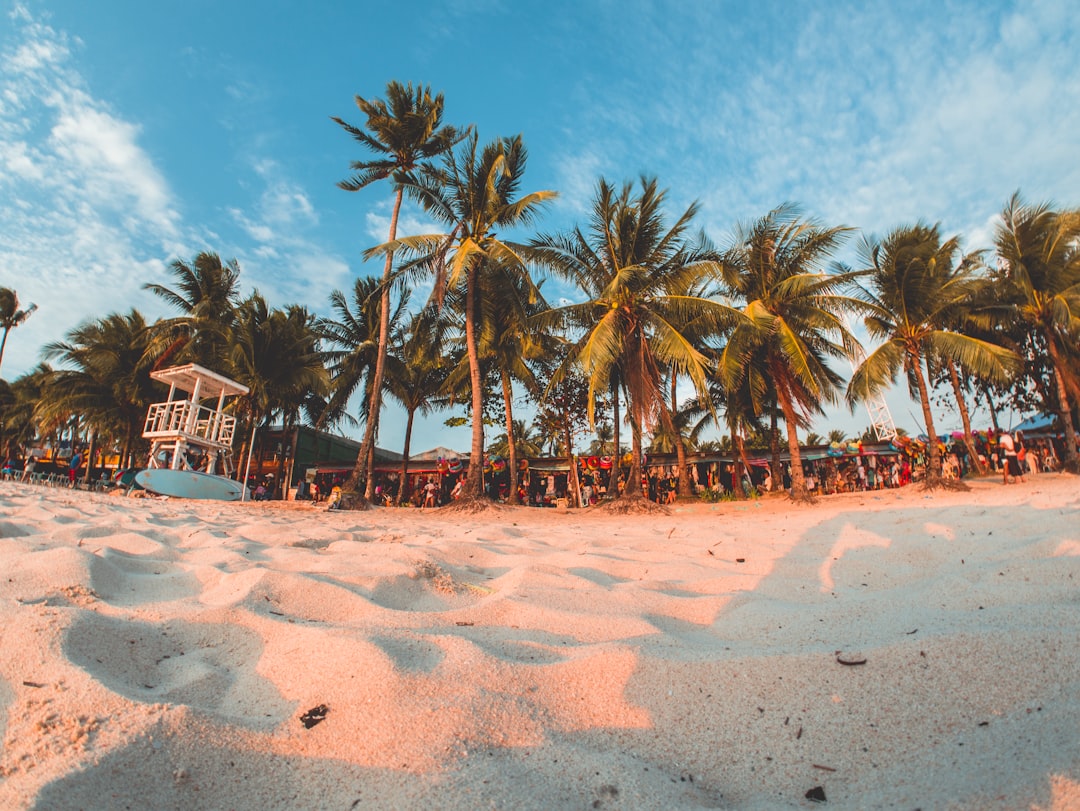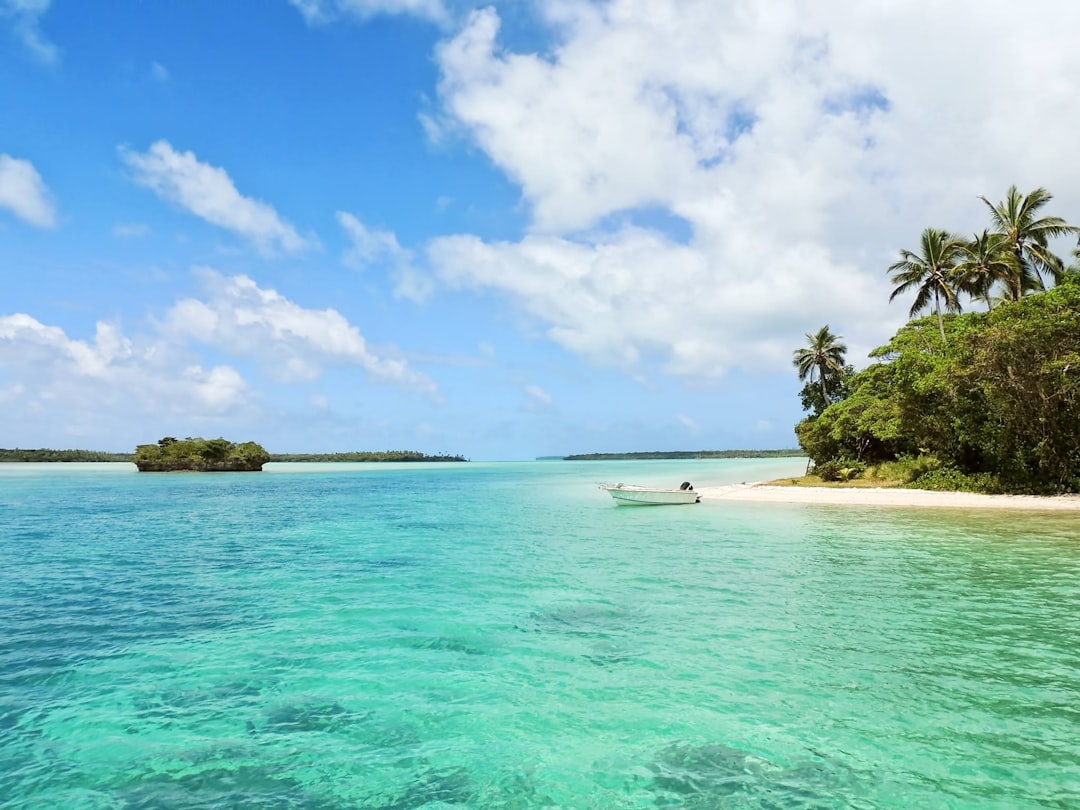Peak Season vs. Off-Season: Navigating the Best Time to Visit Sri Lanka

 Peak Season vs. Off-Season: Navigating the Best Time to Visit Sri Lanka - Escaping the Crowds in the Off-Season
Peak Season vs. Off-Season: Navigating the Best Time to Visit Sri Lanka - Escaping the Crowds in the Off-Season
Sri Lanka is a stunning island nation that offers culture, beaches, wildlife and adventure. However, during the peak tourist season from December to March, popular destinations get very crowded. Visiting in the off-season allows you to escape the hordes and have a more relaxed, authentic experience.
The advantage of traveling to Sri Lanka in the off-season is most noticeable at major attractions. For example, Sigiriya, the iconic ancient rock fortress, sees up to 6000 visitors daily in peak season. By visiting in May or June, you may be among only a few hundred other tourists. The lines and wait times are much shorter, so you can leisurely climb the 1200 steps to appreciate the magnificent views from the top.
The same goes for safari parks like Yala National Park. During the high season, hordes of jeeps crowd around animals sighted near the roads. In the low season, you'll find just a handful of jeeps, allowing for a more intimate wildlife viewing experience. Your chances of spotting elusive leopards and sloth bears are also greater with fewer vehicles around.
Beach destinations also become peaceful retreats in the off-season. Popular spots like Unawatuna and Hikkaduwa get packed with sunseekers from December to March. But visit in April or May and you can leisurely stroll the beach, finding many stretches all to yourself. The ocean is also calmer, perfect for swimming and snorkeling. With fewer crowds, off-season rates at seaside bungalows and resorts are a fraction of the high-season prices.
While Sri Lanka's hill country is lush year-round, avoiding the crowds makes train journeys all the more magical. The scenic train route from Kandy to Ella offers stunning landscapes through tea plantations and valleys. During peak times, the observation cars are crammed with camera-toting tourists. But in the low season, you can comfortably grab a window seat and soak in the views.
The advantage of off-season travel goes beyond sightseeing. With fewer tourists, you can enjoy meaningful interactions with locals. Temple festivals and celebrations let you experience Sri Lankan culture authentically. And low-season rates at guesthouses, homestays and boutique hotels let you connect with hosts on a more personal level. You may even be invited to a home-cooked meal.
What else is in this post?
- Peak Season vs. Off-Season: Navigating the Best Time to Visit Sri Lanka - Escaping the Crowds in the Off-Season
- Peak Season vs. Off-Season: Navigating the Best Time to Visit Sri Lanka - Enjoying Sunny Skies December to March
- Peak Season vs. Off-Season: Navigating the Best Time to Visit Sri Lanka - April Brings New Year Festivities
- Peak Season vs. Off-Season: Navigating the Best Time to Visit Sri Lanka - May through August Offers Low Prices
- Peak Season vs. Off-Season: Navigating the Best Time to Visit Sri Lanka - Experience Cultural Celebrations in July and August
- Peak Season vs. Off-Season: Navigating the Best Time to Visit Sri Lanka - Beach Weather Returns September to November
- Peak Season vs. Off-Season: Navigating the Best Time to Visit Sri Lanka - Planning Around School Holidays and Public Holidays
Peak Season vs. Off-Season: Navigating the Best Time to Visit Sri Lanka - Enjoying Sunny Skies December to March

The sunniest, driest weather in Sri Lanka lasts from December through March. During these peak tourism months, skies stay blue and rainfalls are uncommon. For sun worshippers, it's the optimal time to bask on dazzling beaches along the coast.
The southwest coast gets blasted by monsoon rains from May to September. But the dry season transforms popular beach towns like Bentota, Hikkaduwa, and Unawatuna. Sparkling waves lap powdery sand fringed by swaying palms. December to March daily highs hover around 86°F, with ocean temperatures averaging a comfortable 82°F.
During this sunny season, the historic fort city of Galle explodes with energy. European tourists flock to snap photos of the picturesque Dutch colonial architecture. In the evenings, they fill cobblestone streets lined with eclectic galleries, boutiques, and restaurants. Along the ramparts, locals play cricket as the orange sun sinks into the Indian Ocean.
Further up the coast, the resort town of Negombo comes alive thanks to its proximity to the international airport. Charter flights deliver sun-deprived Europeans eager to unwind at beachfront hotels. Cold beers flow freely at seaside bars and restaurants, with live music filling the salty air.
Sri Lanka's cultural triangle also shines under sunny December skies. The sacred city of Anuradhapura, filled with crumbling dagobas and monasteries, offers a fascinating glimpse into the country's ancient past. Polonnaruwa's well-preserved 12th century ruins sprawl across the sun-baked plains. And the spectacular cliff fortresses of Sigiriya and Yapahuwa tempt visitors to scale their summits and take in panoramic views.
Most visitors combine a cultural tour of the triangles' UNESCO sites with a few days relaxing on the coast. The convenience of intercity trains and buses makes a beach-and-temples combo easy to arrange during this high season window.
Peak Season vs. Off-Season: Navigating the Best Time to Visit Sri Lanka - April Brings New Year Festivities
Sri Lanka's Sinhalese and Tamil communities usher in their traditional New Year in mid-April with vibrant celebrations across the island. Villages come alive with cultural performances, fireworks, and festive fairs. Witnessing these communal festivals offers visitors an unforgettable glimpse into the country's living heritage.
The Sinhalese New Year, known as Aluth Avurudda, arrives on April 13 or 14. During this auspicious time, Sri Lankans kick off the lunar calendar and give thanks for a bountiful harvest. They believe the transition between years renews the environment and human spirit. Through rituals and traditions, they seek blessings for good fortune in the coming year.
In Colombo, the economic capital explodes with nervy energy. Locals dressed in traditional Kandyan clothing flock to Galle Face Green, a seaside urban park. Here, travelers can soak up the infectious celebratory atmosphere. Kite flying competitions add color to the skies, while beachside parades feature dancers, stilt walkers and acrobats.
But the new year festivities are best experienced in rural villages, where traditions run deepest. The day before, families clean and decorate their homes with flowers and oil lamps. Shrines for Hindu and Buddhist deities receive fresh coats of whitewash. Come New Year's day, villagers prepare heaping plates of traditional sweets and kiribath, a rice dish made with milk and bananas.
Dawning the new year requires paying respect to elders. Younger generations kneel before parents, grandparents and respected community figures. They reverently clasp their hands and recite blessings for good fortune. Visitors may be invited to participate in this meaningful ritual. With luck, you'll receive a sprinkling of aromatic herbal water on the crown of your head, along with wishes for prosperity.
The Sea of Milk ceremony holds mystical significance, based on ancient folklore. At an auspicious time, the head male will fill a clay pot from a nearby stream or river. Crossing the threshold into the home, they spill its milky contents on the ground while reciting special mantras. This symbolically washes away the old year's defilements to purify the home.
New clothing, preferably sewn the night before, is donned after a cleansing herbal bath. Villagers drape the men in white sarongs, while women dress in lacy Kandyan osariya sarees. Community elders exchange gifts of betel leaves, signifying prosperity. With the formalities complete, simple celebrations carry on late into the balmy night.
Peak Season vs. Off-Season: Navigating the Best Time to Visit Sri Lanka - May through August Offers Low Prices

With the end of Sri Lanka's sunny high season in April comes a welcome drop in tourist crowds and travel costs. For budget-conscious travelers who don't mind dodging some rains, May through August offers an affordable time to explore this intoxicating island. Lower hotel rates, discounted tours and uncrowded attractions more than compensate for the unpredictable weather.
During the May to August shoulder season, costs plummet at beachside hotels and bungalows. High season rack rates of $300 a night or more drop to $100-150 for a comfortable guesthouse on the coast. Even luxury resorts slash prices, with $600 rooms going for $250. I found a hip boutique hotel in happening Unawatuna for only $60 per night.
The savings aren't limited to accommodation. At Arugam Bay on the east coast, beachfront restaurants that charge $10 a meal in high season drop to just a few bucks. I stuffed myself with fresh seafood curries and chilled Lions beer for under $5. Even activities like surf lessons, lagoon boat trips and scuba diving dip to just 25-50% of peak season rates.
Beyond the beach, cultural and historical attractions become pleasantly uncrowded. At Dambulla's Cave Temples, I ambled through the Buddhist shrines and gilded Buddhas with just a handful of other visitors. In Anuradhapura's sprawling UNESCO site, we were the only tourists wandering the grassy fields among the soaring dagobas and crumbling palaces.
The lack of tourists provided space for memorable interactions with locals. At a village wood carving collective, the craftsmen had time to leisurely explain the traditional techniques they use to carve ornate masks and statues by hand. And on a guided hike through Knuckles Mountain Range, our gregarious guide spotted a rare endemic bird and fished out his field guide to give us an impromptu lecture on its traits and habits.
Visiting during the May to August low season does mean contending with some rain, especially on the west and south coasts. I always came prepared with rain jackets and umbrellas. Torrential downpours happen, but often pass after an hour or two. To avoid setbacks, I'd book open-ended train tickets and excursions through tour companies that allow date changes. If the weather looked stormy, I could postpone a trip to Sigiriya or the tea plantations.
Peak Season vs. Off-Season: Navigating the Best Time to Visit Sri Lanka - Experience Cultural Celebrations in July and August
Sri Lanka is renowned for its vibrant culture, which comes alive in traditional celebrations across the island. By visiting in July and August, travelers can immerse themselves in these captivating festivities that showcase revered customs, rituals and beliefs. Experiencing these cultural events provides a fascinating window into the heritage, identity and spiritual traditions of the Sinhalese and Tamil people.
The spectacular Esala Perahera festival unfolds over 10 days in the royal city of Kandy, while smaller celebrations happen in towns across the country. This "Festival of the Tooth" honors the sacred relic of Buddha's tooth, believed to be enshrined in Kandy's Temple of the Sacred Tooth Relic. The fantastical nightly processions feature over 100 colorfully costumed elephants adorned with glittering lights. Haunting drum beats set the tempo as dancers, fire-twirlers and whip-crackers parade through the streets. The reverent atmosphere is palpable as devotees flock to receive blessings.
I joined the throngs lining Kandy's packed streets and was awestruck by the pageantry and spiritual energy. Removing shoes, we were ushered into the temple where monks performed hypnotic chants. Outside, beasts adorned like Hindu gods swayed solemnly amid dazzling torches. This once-in-a-lifetime experience left me spellbound and humbled.
The holiday of Esala Poya showcases Sri Lanka's living heritage. On the full moon of July/August, the spectacular spectacle and rituals of Kandy's Esala Perahera culminate with a grand final procession to the river. At temples everywhere, silken flags flutter while devotees balance oil lamps in prayer. In Colombo, the placid waters of Beira Lake erupt with a riot of rowdy traditional boat races.
My exhausted friend in Colombo canceled our beach plans, insisting we experience Esala Poya in the capital. At dawn, we joined crowds releasing lotus blossoms on Beira Lake's serene surface. We watched bare-chested men vigorously paddling outrigger canoes, cheered on by frenzied spectators. Then we sampled sweet kavun, a coconut and treacle fudge at bustling streetside stalls. This perfect day provided blissful immersion in treasured local traditions.
The unique Hindu festival of Vel showcases drumming, fire-walking and elaborate costumes. Rooted in folklore about Lord Murugan, it culminates on the full moon in July/August. My favorite Vel celebrations unfolded in the northern cities of Jaffna and Trincomalee. Here I glimpsed the Tamil cultural heartland, where streets transformed into vibrant stages. Young men balanced enormous kavadi contraptions on their shoulders and danced frenetically to pounding beats. Others fell into trance-like states, seemingly impervious to impaling hooks and hot coals. This hypnotic fusion of devotion, pageantry and bravado was unforgettable.
Peak Season vs. Off-Season: Navigating the Best Time to Visit Sri Lanka - Beach Weather Returns September to November

As temperatures cool across Europe in September, a reverse migration happens on Sri Lanka's shores. Charter flights deliver eager sun-seekers, this time from Russia and Scandinavia, chasing warm-weather escapes. The low-season monsoon rains along the coast have tapered off by late September. In their wake lie rejuvenated beaches, refreshed by months of downpours. The stage is set for the return of beach season.
Through November, Sri Lanka's coast offers ideal conditions for relaxing seaside holidays. The southwest beaches around Bentota and Hikkaduwa see average highs in the low 80s, with plenty of breezy palms for lounging beneath. The ocean temperatures hovering around 80F make swimming and snorkeling pleasant. This marks the start of prime diving season, with clear 25m plus visibility to explore coral reefs and shipwrecks.
I found the vibe during this shoulder season wonderfully chilled out. At my beachfront guesthouse in Midigama, I'd wake up early and have the golden sands all to myself for long, lazy sunrise walks. Afterwards, the always-smiling staff would deliver a breakfast of hoppers, string hoppers and fresh tropical fruit to my patio. By 10am, just a handful of bathers would flutter down to the beach, leaving plenty of space for relaxation.
In the lazy afternoons, I'd stroll south along the beach, stopping to body surf playful rollers. Wandering past the wooden beach shacks, where reggae tunes drifted through the palms, I'd receive smiles and warm hellos from local shop owners. They were always ready to offer up the sweetest mangoes or king coconuts.
As the days wound down, I'd park myself on a lounge chair and alternate between reading novels and watching surfers ride clean right-handers. Small pods of dolphins appeared daily, frolicking just beyond the breakers to cheers from us land lovers. At my favorite seaside restaurant, where crabs scurried underfoot, I'd watch the sky ignite in a riot of color at sunset.
With the return of balmy weather, popular spots like Unawatuna, Hikkaduwa and Mirissa perk back up with activity. Bars, restaurants and shops reopen after the off-season lull. But compared to the December crowds, the vibe remains unhurried. A tank top and sarong are always acceptable attire.
Weligama, a low-key surf town just east of Mirissa, embodies the September-November beach ethos. Surfers migrate here to ride waves peeling off grassy headlands. The pace is slow, with fishermen heading out to sea in the morning and small crowds lingering at sunset. At my tropical-chic guesthouse, I'd swap travel tales over passionfruit cocktails with chilled-out globetrotters. We'd sample fiery local curries, plan our next excursions, then stroll the beach meeting similar vagabonds.
Peak Season vs. Off-Season: Navigating the Best Time to Visit Sri Lanka - Planning Around School Holidays and Public Holidays
Sri Lanka's peak tourism season aligns with Europe's winter school holidays. From mid-December through early January, airports fill with family travelers eager to escape the cold. Kids celebrate winter break camping on beaches and exploring ancient ruins. Then in April, during spring break, a new wave arrives to enjoy the sunny high season.
While enjoyable for families, these crowded periods mean you'll pay premium prices. Trying to book a beach villa or safari jeep during Christmas or Easter can be frustrating. Many places sell out months in advance. And the most popular attractions turn into crowded chaos. Imagine jostling through crowded temples while wrangling overexcited kids.
Savvy travelers willing to take kids out of school can score great deals by visiting in May or late October. A British couple I met during Sri Lanka's off-season said visiting in October, while schools were in session, gave them "the gift of space." At sites like Lion Rock and Dambulla Cave Temples, their kids could roam freely without getting jostled. And they landed an oceanfront villa for nearly half the cost of peak times.
Beyond school holidays, Sri Lanka's myriad festivals, poya days and public holidays affect availability and prices. Trying to travel during big events like the Kandy Esala Perahera in August means battling sky-high rates. But visiting before or after avoids the crush. I planned my trip to miss both crowds and premium pricing.
Booking around significant holidays takes effort but pays dividends. Once, I arrived in Galle, hoping to extend my stay at a laid-back fort guesthouse. But they were fully booked for the upcoming full moon public holiday. Everywhere local families gathered to celebrate, prices suddenly quadrupled. By leaving town just before the holiday, I avoided the 400% rate hike.
Public holidays vary from year to year, so research before locking in plans. I once got stuck in Colombo when the city shut down to celebrate Eid al-Fitr at the end of Ramadan. Excursion vendors closed up shop and transport schedules went haywire. Some extra research could have saved this hassle.
